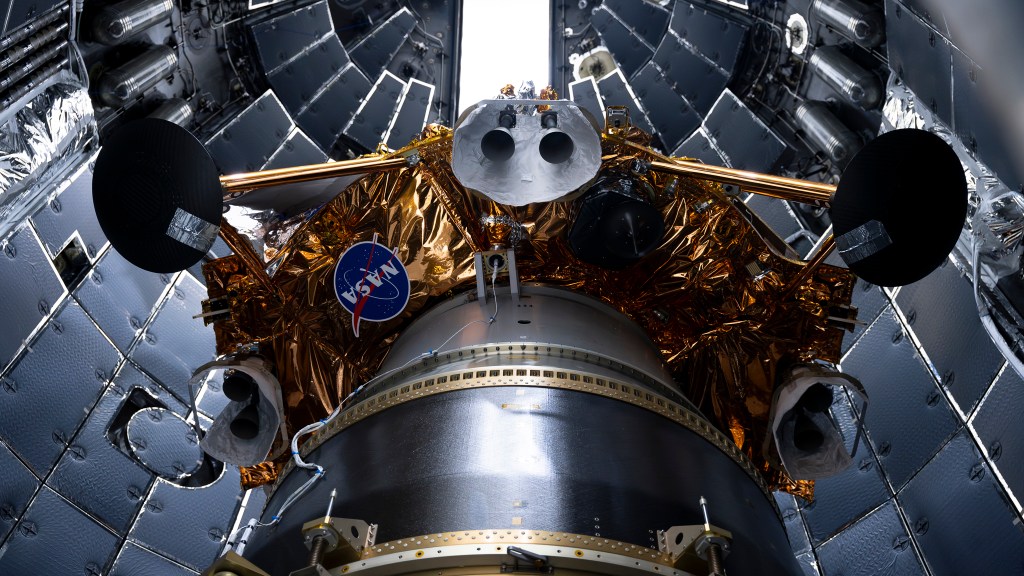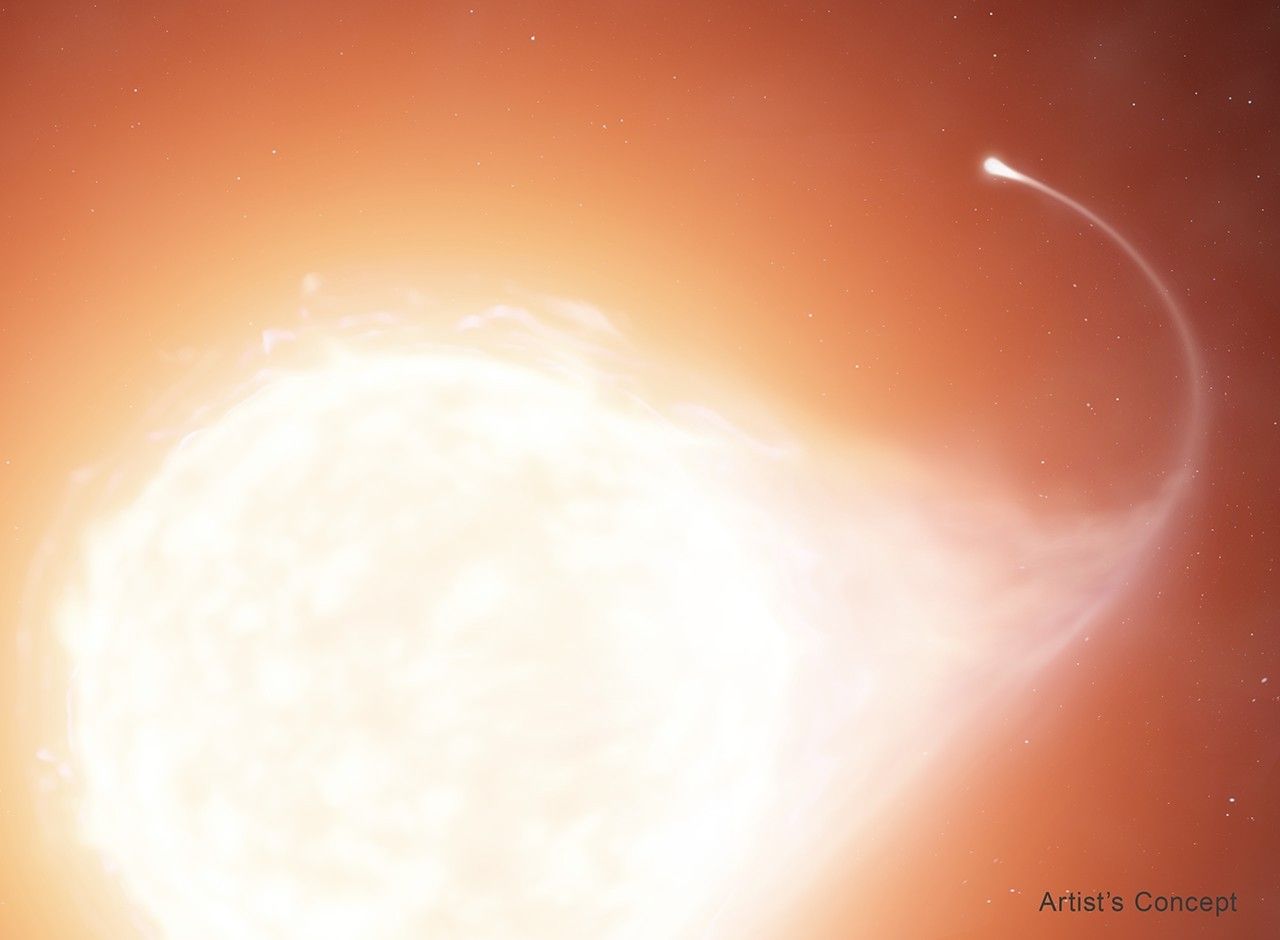
By Danielle Sempsrott
NASA’s Kennedy Space Center
NASA’s Orion spacecraft for Artemis I returned to the agency’s Kennedy Space Center in Florida on March 25 after engineers put it through the rigors of environmental testing at NASA’s Plum Brook Station in Ohio. At Kennedy, the spacecraft will undergo final processing and preparations prior to launching on the first in a series of increasingly complex missions to the Moon that will ultimately lead to the exploration of Mars.
The spacecraft – comprised of the crew module and service module – arrived in Ohio during the fall of 2019, where two phases of testing occurred inside the world’s largest space simulation vacuum chamber. First, the spacecraft demonstrated it could handle the extreme temperatures of space during thermal vacuum testing, simulating sunlight and shadow Orion will encounter during flight. During this test, the spacecraft was exposed to temperatures ranging from -250 to around 200 degrees Fahrenheit. Next, an electromagnetic interference and compatibility test verified all of Orion’s electronics work correctly when operating simultaneously and in the electromagnetic environments it will encounter during its mission.
“The test went exceptionally well, especially considering we were doing all of this for the first time,” said Nicole Smith, testing project manager at NASA’s Glenn Research Center. “We found a lot of efficiencies throughout the thermal vacuum phase, and overcame a few facility equipment challenges early during electromagnetic interference testing, but our combined NASA, Lockheed Martin, ESA (European Space Agency) and Airbus team was able to complete the testing ahead of schedule.”
Arriving at Kennedy in the agency’s Super Guppy aircraft, Orion is now ready to undergo its next phase of processing. Before it can be integrated with the Space Launch System (SLS) rocket, the Orion spacecraft will go through a final round of testing and assembly, including end-to-end performance verification of the vehicle’s subsystems, checking for leaks in the spacecraft’s propulsion systems, installing its solar array wings, performing spacecraft closeouts and pressurizing a subset of its tanks in preparation for flight.
Orion will then begin its ground processing journey with Exploration Ground Systems. The first stop on the journey will be at Kennedy’s Multi-Payload Processing Facility for fueling and pressurizing of its remaining tanks, and after this, to the Launch Abort System Facility for integration with the spacecraft’s launch abort system (LAS). After installation of the LAS, engineers will transport Orion to the Vehicle Assembly Building, where they will stack the spacecraft atop SLS when the rocket arrives to Kennedy. Once integrated with SLS, a team of technicians and engineers will perform additional tests and checkouts to verify Orion and SLS operate as expected together.
“The Artemis program is the future of human space exploration, and to be a part of the design, assembly and testing of NASA’s newest spacecraft is an incredible, once-in-a-career opportunity,” said Amy Marasia, spacecraft assembly operations lead in Orion production operations at Kennedy. “Witnessing the daily transformation of numerous individual flight hardware components and parts into a fully equipped and operational spacecraft is one of my favorite parts of this job.”
NASA’s Super Guppy transport was assisted by the U.S. Department of Defense (DoD), who provide specialized equipment and services to load and offload the spacecraft from the Super Guppy, and the Ohio Air National Guard, who provided supplemental air cargo transport services for support equipment and overnight hangar storage for the spacecraft prior to the Super Guppy airlift. NASA, DoD and the Ohio Air National Guard made the decision to continue with the transport operation after a full assessment determined that the risks to personnel due to COVID-19 would be low and could be reduced by steps taken during the operation.
“NASA sincerely thanks the DoD personnel from the United States Air Force’s Air Mobility Command who helped us accomplish this mission essential operation during these trying times,” said Mark Kirasich, manager for the Orion Program at NASA’s Johnson Space Center in Houston. “Specifically, we’d like to thank the 437th Aerial Port Squadron from Joint Base Charleston and the 305th Aerial Port Squadron/87th Logistics Readiness Squadron from Joint Base McGuire-Dix-Lakehurst of the U.S. Air Force Air Mobility Command, the 45th Logistics Readiness Squadron from Patrick Air Force Base of the U.S. Air Force Space Command, and the 179th Airlift Wing from Mansfield-Lahm of the Ohio Air National Guard.”
Under the Artemis program, NASA will land the first woman and the next man on the Moon by 2024. Through the Gateway – an outpost in lunar orbit – the agency will develop a sustainable presence in deep space, taking what crew members learn on the lunar surface and applying that to the journey on to Mars. As the first integrated flight of SLS and Orion, Artemis I is critical to providing the foundation for human deep-space exploration.
“With Orion back at Kennedy, we’re ready,” said Scott Wilson, NASA Orion production operations manager. “Ready to finalize the vehicle and send it to be integrated for its voyage to deep space, tackling the next era of human space exploration.”


























